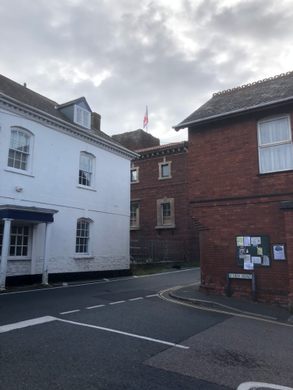Starcross Engine House & Brunel’s Atmospheric Railway
Isambard Kingdom Brunel, one of the great Victorian engineers, was the driving force behind the short-lived atmospheric railway.
It seemed like a fabulous idea.
Instead of using steam locomotives, trains were moved by a system of atmospheric (vacuum) traction. Air was extracted from 15-inch pipes, laid between the rails, by stationary engines at a series of pumping stations along the line. On top of the pipes was a continuous sealable slot which allowed a piston to pull the train. Under the first carriage hung a 15-ft long piston, shaped like a dumbbell, with small wheels outside the pipe and before and after the piston that opened and closed a leather valve.
The 20-mile section from Exeter to Newton Abbot was completed in 1847, a single broad-gauge track. Trains ran at speeds of up to 70 miles per hour, but normal speeds were usually about 40 mph. It was the world’s longest atmospheric railway. Trials with trains hauling 120 tons were made and, on one occasion, the 8½ mile journey from Exeter to Starcross took just 15 minutes. As a public service two trains per day were run. Despite the technical difficulties, the service was remarkably reliable.
The atmospheric-powered service lasted for less than a year. The harsh environment of the line, which runs next to the sea, caused difficulties in maintaining the leather flaps provided to seal the vacuum pipes, which had to be kept supple by being regularly oiled; this unfortunately made the greased leather attractive to rats who further reduced the efficiency of the seal. By June 1848 the atmospheric railway was 7% more expensive to run than a conventional system and it was closed down for good.
An impressive engine house at Starcross survives, now a sailing club, and a section of the pipe, without the leather covers, is preserved in the Newton Abbot Town and GWR Museum.
Know Before You Go
At the sea front; can't be missed!
The Atlas Obscura Podcast is Back!
























Follow us on Twitter to get the latest on the world's hidden wonders.
Like us on Facebook to get the latest on the world's hidden wonders.
Follow us on Twitter Like us on Facebook